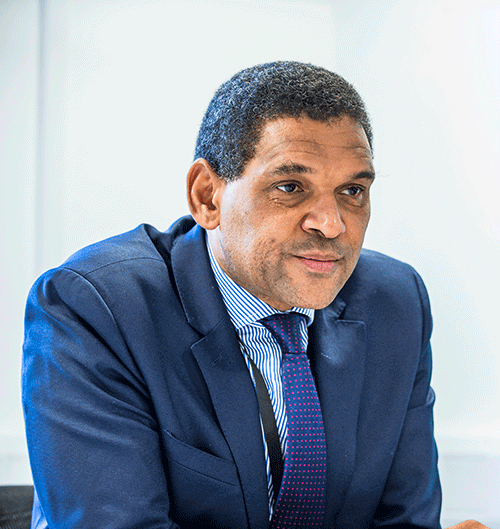 Up on the eight floor of Euston House, in London, lies Digital Railway. Housed in the 1930s red-brick former HQ of the London Midland & Scottish Railway, in Eversholt Street, it has a small reception area with the usual mix of charts and posters.
Up on the eight floor of Euston House, in London, lies Digital Railway. Housed in the 1930s red-brick former HQ of the London Midland & Scottish Railway, in Eversholt Street, it has a small reception area with the usual mix of charts and posters.
On one, there’s a blog. It quotes JFK’s “we choose to go to the Moon…” words, on which RailReview reflected two years ago when this magazine last looked at NR’s Digital Railway proposals. The words capture not only the vision involved with DR, but its difficulties too. Back in 1962, when JFK spoke, no one had been to the Moon. Likewise, no one has yet installed DR on a UK main line.
The blog kept its space theme by then mentioning the ill-fated Apollo 13, immortalised in director Ron Howard’s film of the same name, starring Tom Hanks as Commander Jim Lovell. This was the mission that had America and much of the world on the edge of their seats, as three astronauts and their ground team battled to bring themselves home after an explosion in a fuel tank crippled their spacecraft, leading to a loss of oxygen and power.
The mission could have been a disaster. The crew could have been condemned to orbit their homes forever and a day. Instead it was a triumph of man’s ingenuity. The crew fought the odds, came home safely and (arguably) saved the future of manned spaceflight.
“Why can’t the development and implementation of the Digital Railway be our industry’s finest hour?” asks the blogger. “I think, with the right attitude, it can,” he concludes.
Plenty has changed since RailReview last considered DR, when interviewing former NR Group Asset Management Director Jerry England in November 2014 (Q4-2014). The biggest change is that Network Rail recruited the highly respected David Waboso from London Underground in the middle of 2016, to become DR’s managing director.
He brings considerable experience and credibility. In the early 2000s he led the erstwhile Strategic Rail Authority’s development of European Rail Traffic Management Systems (ERTMS, of which ETCS - European Train Control System is a part), which resulted in the Cambrian Line switching to ERTMS signalling in 2011. He led LU’s resignalling projects for the Jubilee, Victoria and Northern Lines, which delivered significant increases in capacity. He also led the more troubled sub-surface lines project that promises more capacity but which has still to be delivered after several delays and changes of contractor.
Waboso arrived just a couple of months after NR revealed plans to resignal lines between Norwich, Yarmouth and Lowestoft with ERTMS by December 2018. The plan was quickly ditched.
England told RailReview back in 2014: “I want to get to the point where the first project in CP6 is a Level 3 project, which may be quite a tall order to get ETCS from where it is today (which is not very far) to fully implementable in four years. That’s quite a challenge.”
It was indeed a challenge, and you don’t need to take my opinion. In peer reviewing the piece, former Chairman of the Institution of Mechanical Engineers Railway Division Cliff Perry wrote: “Vision 9/10. Reality check 4/10.”
At the time, NR was talking about capacity increases of up to 40%. It still is. There’s no doubt the railway needs this extra capacity. Passenger numbers have doubled to 1.6 billion since privatisation, and in many busy commuter areas trains are as long as they can reasonably be. Station platforms cannot be readily extended in many places. Increasing frequency without any commensurate increase in track capacity causes congestion and delays, such that NR is well adrift of its year-end performance target by 4.6 percentage points, according to ORR.
There has also been widespread scepticism about NR’s goals, both from experts and even the House of Commons Transport Select Committee. In autumn 2016, the TSC was blunt in saying: “Projections based on ETCS Level 3 should only be considered valid when the Level 3 specification is ready for deployment, and Network Rail should avoid using such projections, or the promise of a ‘moving block’ signalling system, in its publicity until such technology is ready to be deployed.”
The whole NR case therefore demands both detail and nuance. When Network Rail talked of 40% capacity improvements, there was a widespread view among signalling engineers that this could only be achieved via moving block Level 3 signalling. That appears to have been the Transport Select Committee’s assumption, despite NR saying it was talking about Level 2. The aim of Level 2 digital signalling is a marked increase in capacity via the installation of more and shorter block sections, which is the way London Underground boosted capacity on the Victoria Line. Level 2 does, however, have substantial installation and maintenance costs, and runs counter to a general view that the future of signalling systems is to have less track kit to maintain, which implies Level 3 signalling. With me so far?!











